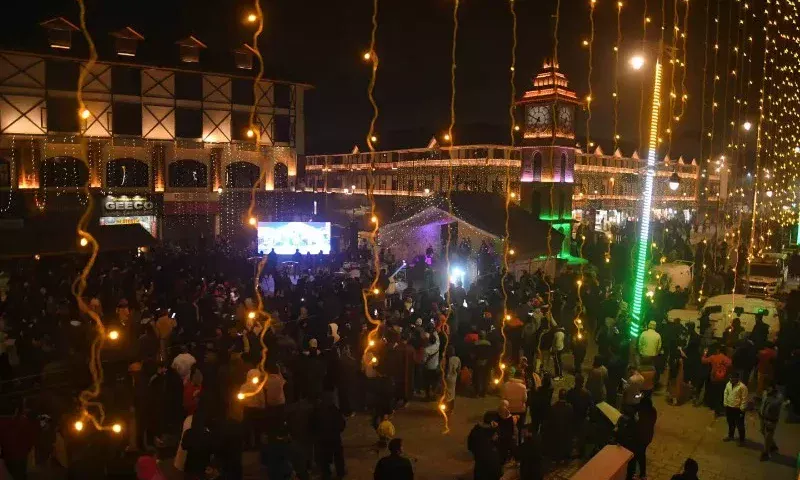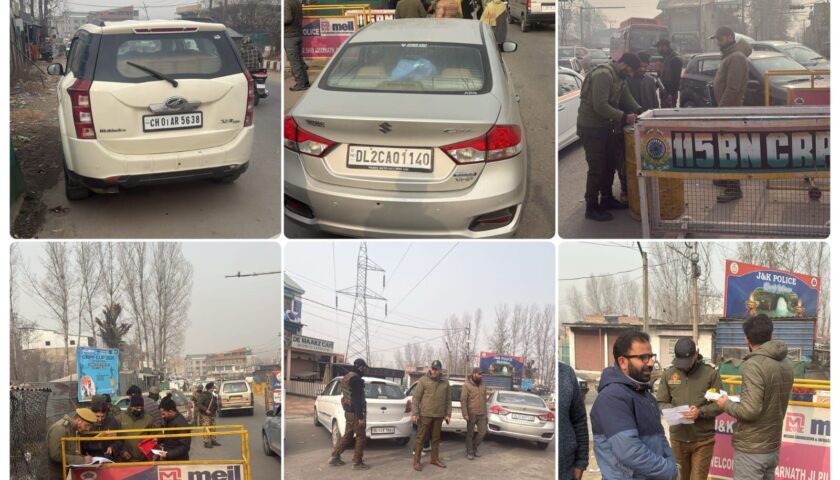With the changing lifestyle of people across the globe, Koshur Pheran (traditional attire) is still considered the king of winter dresses and has got a special place in the lives of people in the Valley.
The unisex garment has long been part of the valley’s traditional wear and is associated with the Kashmiri identity like Kanger and Wazwaan. Its history is as old as Kashmiri civilization, but its design has seen minor changes over the past several decades.
As per historians, the traditional Pheran extends to the feet, which was popular up to the late 19th century while a modern variation of the Pheran extends below the knees.
There is a popular belief among the people that it was Mughal emperor Akbar who introduced the long garment in the Kashmir valley in 1586.
British Settlement Commissioner for Jammu and Kashmir, Sir Walter Lawrence in his book ‘The Valley of Kashmir (1895)’ credits Akbar and the Mughal rule with bringing the Pheran to Kashmir.
While noted educationist Tyndale Biscoe in his book ‘Kashmir in Sunlight and Shade’ mentions that when the Afghans conquered Kashmir they forced the men to wear the same dress like the women.
“Kashmiris are not fond of Mughals or Afghans or those who came after them. But their love for the Pheran has grown manifold,” Biscoe says in his book.
Pheran is generally made of wool. It covers the body from the bone-chilling cold and it is generally worn by all people in the valley. The dress is popular in the Valley, while people in Chenab valley also prefer to wear it during winters.
Female Pheran dresses are designed with colourful flower-like design elements and styles, while male Pheran dresses are much simpler.
Even women in the valley prefer a range of Kashmiri embroidery on their Pheran from sozni, aari to tilla, which is either hand or machine-made tilla.
In some rural parts of the valley, Pherans are worn around the year. The summer Pherans are made of cotton, while the winter ones are made of tweed or wool.
The Pheran has a deep pocket, loose sleeves, and is shorn of embroidery and comes with a detachable cotton lining (postch) for extra warmth.
While the traditional winter Pheran is bulky and meant to keep one warm during intense cold, the contemporary versions, which have a wider audience, are slimmer, made in lighter fabrics like silk and crepe, can be worn in summers and have a fluid drape.
With new designs in the market, the traditional Pheran has a huge demand during winters in Kashmir.
Ghulam Rasool Ganaie, a tailor master from Hyderbeigh Pattan area of north Kashmir’s Baramulla told Kashmir Post that traditional Pheran is made of six rectangular pieces of cloth, stitched together to form a robe. “Its shapelessness allows the people to carry a Kangri,” he said.
Ganaie, who is in the tailoring profession since the 1980s, says that over the past several decades there have been little changes in designs as the new generation prefers collared Pheran, hood Pheran, court Pheran over the traditional ones.
“The designer Pheran has less space and it will not allow a person to carry a Kangri inside it. Modern Pheran is not as wide and long as the traditional ankle or knee-length version and sometimes has side slits,” he said.
For several decades now, the Kashmiri Pheran has become a symbol of Kashmir across the world. Many Bollywood actors like Shahid Kapoor, Ranbir Kapoor, and Salman Khan were seen wearing Pherans while filming in Kashmir.
For Placing Order For Kashmir Pheran & Other Kashmiri Products, Can visit Kashmir Store Or Kashmir Bazar.




